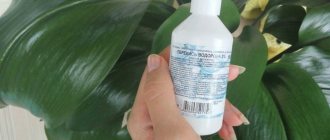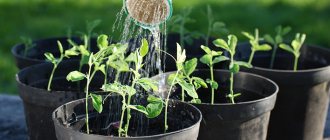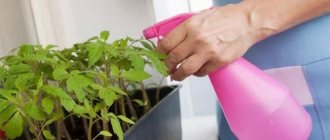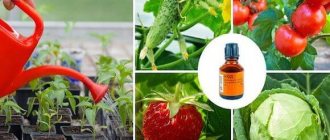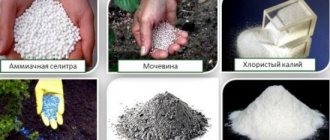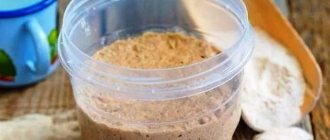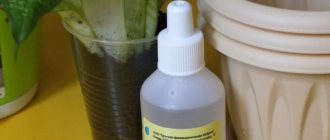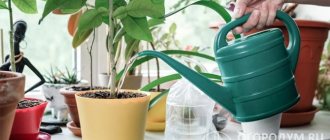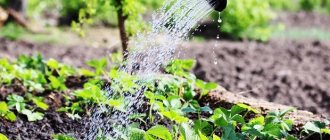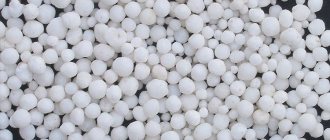Disinfection with hydrogen peroxide is used no less often than with iodine. But how much do we know about this substance? What are its benefits for humans and plants?
Hydrogen peroxide (hydrogen peroxide) is a colorless liquid that easily dissolves in water and alcohol. The substance was obtained in the 19th century, when the French chemist Louis Jacques Thénard conducted an experiment on the effect of sulfuric acid on barium peroxide. The resulting liquid was tasteless, odorless, and colorless and differed from water by only one atom of oxygen (H₂O₂).
To date, the effect of hydrogen peroxide has been studied quite well, but research continues. She received recognition as an antiseptic. But peroxide is also used in textile and pulp and paper production to bleach fabrics and paper, and in the food industry to disinfect equipment. Thanks to its properties, the substance has found application in rocket construction, cosmetology and even aquarium farming!
The effect of watering seedlings
Systematic watering and spraying of plants with a solution of hydrogen peroxide promotes the rapid growth of seedlings and the formation of healthy seedlings.
- Improvement and strengthening of the root system.
- Increasing plant immunity.
- Additional nutrient medium.
- The extra atom in the external environment is separated from the molecule. The oxygen environment creates living conditions that are impossible for microorganisms (viruses and bacteria).
- Neutralization of nitrites and nitrates.
- Hydrogen peroxide is an oxidizing agent for soil. A favorable environment promotes rapid seed germination.
Hydrogen peroxide for plant cuttings
dom-sad-og.ru
Hydrogen peroxide also has a healing effect on plant cuttings. Thanks to oxygen saturation, they will begin to develop faster and will receive protection from rot, and in the future they will not have problems with rooting. To prepare the solution, add 1 tsp to 1 liter of water. peroxide and place the cuttings in a container. After a day, the plants can be removed and dried. It is better to discard diseased specimens, but if you really want to save the cutting, put it in the prepared solution until it looks healthy.
In a solution of hydrogen peroxide, the cuttings will not rot, which can happen when soaked in ordinary water.
When to use peroxide
Hydrogen peroxide is considered one of the safest and at the same time very useful means for plants at all stages of their development.
- For seeds - soaking before sowing or germination, as a growth stimulator and disinfectant.
- For seedlings – a stimulator for the formation and strengthening of the root system.
- For seedlings - the formation of immunity before or after transplanting into the ground.
- For mature plants – immunity support, pest control, soil aeration.
How do you know if flowers don't have enough peroxide?
Lack of oxygen in irrigation water can cause the development of root rot, mold, blackleg or late blight.
If you begin to notice signs of these diseases in your flowers, then add hydrogen peroxide to your watering, which will create additional aeration of the soil.
IMPORTANT! If you use hydrogen peroxide too often and on a regular basis, the natural immunity of plants will decrease, and they will develop a dependence on this compound.
When not to use peroxide
Hydrogen peroxide is indicated for all vegetable crops and most indoor flowers. However, there are a number of contraindications when the use of hydrogen peroxide is not recommended:
- Hydrogen peroxide for treating and feeding plants is used a maximum of 2 times a week when using purchased soil and once a week when growing in garden soil. An excess of peroxide leads to a change in the qualitative composition of the soil.
- Peroxide is not used for spraying crops with double leaves. Contact of the product on the leaf plate stimulates putrefactive processes.
- Succulents and cacti are not treated with peroxide, as they react sharply to changes in the balance of micro and macroelements in the soil.
How to feed an orchid with peroxide?
An orchid is a rather capricious plant that does not always respond well to fertilization. It is very sensitive to changes and temperature changes, so you can use simple methods to improve growth and flowering.
How to feed an orchid with peroxide:
- To feed the crop, it is best to use foliar feeding. To do this, you need to dissolve about 40 ml of peroxide in 500 ml, pour it into a spray bottle, and sprinkle the leaves.
- It is believed that green mass absorbs nutritional components better, so plants respond best to such fertilizing. If the orchid begins to hurt, you can use a medicinal solution.
- To do this, dissolve 50 ml of 3% peroxide in 1000 ml and add one drop of iodine. Transfer the mixture into a spray bottle again and apply to the green mass. Try not to get the product on the flowers, as dark spots may remain.
- As in the previous recipe, it is not recommended to increase the concentration of iodine and peroxide so as not to burn the leaves. It is advisable to carry out such treatment once every 6 days. It is believed that timely spraying allows disinfecting leaves and suppressing the growth of pathogens, bacteria and fungi.
Treatment
Precautionary measures
- Before watering and spraying, remove all fallen leaves from the ground.
- Do not exceed the recommended dosage, especially when spraying, since a high concentration of peroxide causes leaf burn.
- A solution of hydrogen peroxide is considered an independent fertilizer; it is not mixed with other types of fertilizers.
- Use only freshly prepared solution.
- A sign of overdose is whitening of the stems or leaves of the plant. In this case, take a break from using the selected product.
Hydrogen peroxide: benefits and harm to human health
Hydrogen peroxide disinfects abrasions and small cuts. For medical purposes, a 3% solution of hydrogen peroxide is most often used. When it comes into contact with the skin, the substance foams and kills harmful bacteria and prevents them from multiplying. The product is also used for stomatitis, sinusitis, sore throat, and fungal infections of the feet. Peroxide is produced in containers of 40 and 100 ml.
The antibacterial effect of hydrogen peroxide is quite short-lived, so when treating wounds you cannot limit yourself to it alone.
Hydrogen peroxide, the benefits of which are rarely questioned, still has a number of dangerous properties. Thus, it can cause itching, burning and redness of the skin, and increase the risk of scar formation at the wound site. Even the correct hydrogen peroxide, diluted according to all instructions, can burn the mucous membrane. It is dangerous to use this remedy for other purposes, especially internally. Unconventional methods of treating diseases such as cancer, stroke, diabetes, etc. with peroxide have not yet received official confirmation, so you should not experiment on your own health.
Seed treatment
Hydrogen peroxide, along with manganese, is used to treat seeds and increase their germination percentage. Before planting, the seed is kept in a concentrated peroxide solution:
- 500 ml water;
- 25 ml peroxide.
The seeds are placed in gauze well moistened with a solution or on a napkin and kept for 8-12 hours.
It is possible to use a pure 3% solution from a pharmacy. To do this, the peroxide is heated to 40°C, the seeds are placed in it and kept for 7-10 minutes. If a 3% peroxide solution at room temperature is used for processing, the time is increased to 30 minutes.
If seed treatment is carried out only for the purpose of disinfection, then you can spray them with a spray bottle and dry them.
When soaking seeds, adjustments are always made for the crop. For example, tomatoes, eggplants, beets and peppers are kept in the solution for 24 hours. Parsley, dill and carrot seeds are soaked for at least 15 hours , as they contain a large amount of essential oils that make it difficult for sprouts to appear.
Important: seeds can only be soaked in plastic or ceramic containers.
Peroxide as a growth stimulator for seeds and the development of the root system of seedlings.
Methods of soaking seeds in hydrogen peroxide before planting, in addition to disinfection, also have a stimulating effect. The seeds contain inhibitors that prevent them from germinating. In nature, they are destroyed naturally through the process of oxidation.
When H2O2 works, its molecule breaks down and active oxygen is released, which is an active oxidizing agent. Therefore, it is more likely to destroy the inhibitor, which increases the percentage of germination and promotes more active germination.
Scientists have proven that the use of this drug as a stimulant is more effective than the use of the commercial drug Epin-Extra or potassium permanganate. Experiments have shown that the percentage of germination of tomatoes after such treatment can reach 90%, corn - 95%. After soaking cabbage seeds, seedlings appear earlier than usual in 2 to 7 days.
Before planting, it is recommended to treat the seedlings with hydrogen peroxide. Active oxygen kills bacteria and also promotes growth by saturating tissues with oxygen. You can either spray the seedlings or place them in the solution. It revives dried roots and is also the best at preventing root rot.
Take 3 ml of the drug per liter of water and place the seedlings there for the required time. If you use the method as a growth stimulator, a day is enough. If the plant is sick, you should use the solution until complete recovery, renewing it.
Due to the saturation of plant tissues with oxygen, their immunity increases, and cuttings take root faster. It has been noticed that after treating tomato seedlings with peroxide, there are significantly fewer cracks on the ripened fruits.
Against diseases
In order to prevent diseases and as protection against pests, hydrogen peroxide is used for spraying garden and vegetable crops. The solution is prepared according to the recipe:
- 1 liter of water at room temperature;
- 50 ml peroxide;
- 2 tbsp. medical alcohol 70%;
- 2-3 drops of liquid soap.
Carefully move everything and use it undiluted for spraying plants to protect them from aphids, scale insects, and mealybugs. It is also a remedy for blackleg and rot.
The solution is prepared immediately before use.
Hydrogen peroxide for plants - use as a fertilizer
It turns out that hydrogen peroxide can improve soil quality and increase the ability of plants to absorb nutrients. To do this, it is enough to spill the beds with water with the addition of a substance a couple of days before applying fertilizers (4-6 tablespoons per bucket of water). So, you can use hydrogen peroxide for cucumbers, tomatoes and many other crops.
Hydrogen peroxide is also useful for old soil. Water it with the product (3-4 tablespoons per 1 liter of water), and gradually the soil will become more fertile due to oxygen enrichment.
Application by crop
Tomatoes
Tomatoes respond well to hydrogen treatments, since during the growth process this crop consumes maximum nutrients from the soil and needs constant feeding.
- To enhance the effect, it is recommended to alternate root and foliar feeding.
- Throughout the entire seedling period, peroxide treatment is carried out every 14 days, starting from the formation of the first pair of true leaves, but not earlier than 15-20 days after germination.
- For spraying, take a solution prepared according to a standard recipe. If the plants develop without failures, for prevention they are sprayed or watered at the roots with the same composition every week.
- If problems arise, the seedlings weaken or turn yellow, spraying is replaced by watering.
- A week after planting tomato seedlings in the ground, the plants are watered with a solution at the rate of 20 tbsp. peroxide in a bucket of water.
- This helps the bushes to quickly adapt to a new place and grow green mass, and also protects them from falling flowers.
- To protect tomatoes from late blight, plants are sprayed with a solution of peroxide with iodine. To do this, dilute 35 ml of peroxide and 4 drops of iodine in 1 liter of water at room temperature.
- Spraying with a solution in the proportion of 25 ml of peroxide per 1 liter of warm water helps protect nightshades from fungus.
cucumbers
Cucumbers are considered one of the weakest crops. They are often attacked by fungal diseases, so in addition to spraying to maintain the vegetative mass, they are watered with a solution at the rate of 10 ml of product per 10 liters of water. This is a prevention of powdery mildew, as well as a means of combating aphids.
Due to their large leaf blades, cucumbers are sprayed only in the evening or in cloudy weather. Attention is paid not only to the outside, but also to the back side of the sheet.
Important: when watering cucumbers with peroxide solution, make a groove near the bushes, retreating a few centimeters from the base of the stem. This will prevent burns to the roots.
Peppers and eggplants
Pepper seedlings need a less concentrated peroxide solution: 20 drops of peroxide per liter of water. As with tomatoes, peppers are treated with the solution no more than once a week.
Important: a saturated watering solution can burn the roots.
The watering regime is changed only after picking or after planting the plants in the ground. For them, you need to dilute 2 ml of peroxide in 1 liter of water. This concentration is needed for weekly watering. If fertilizing is carried out less frequently, then the proportions are changed: 2 tbsp. funds per liter of water.
All this applies to both pepper seedlings and eggplant seedlings.
Strawberries
For strawberry seedlings, a working solution is prepared, which is sprayed on young bushes from early spring and throughout the growing season. This protects the plants from rot and strawberry weevil.
To prevent fungal diseases, before planting strawberry seedlings in the ground, water the beds with a solution prepared from 1 liter of water and 5 tablespoons of a pharmaceutical product.
Important: hydrogen peroxide is absolutely safe for plants and humans, so you can spray strawberries even during the fruiting period.
Petunia
Spraying petunia seedlings with a solution of hydrogen peroxide helps the plant form abundant greenery and prolong flowering. To do this, dilute 2 tablespoons per 1 liter of water. peroxide.
Important: watering the roots with peroxide solution is not permissible for petunia.
Treatment of plants with hydrogen peroxide
Hydrogen peroxide has been successfully used to protect the health of garden and indoor crops. Thanks to its composition, it saturates the soil with oxygen, acidifies it, kills pathogenic bacteria and allows plants to absorb nutrients faster. Treatment with hydrogen peroxide in the initial stages helps get rid of bacterial rot, powdery mildew and late blight.
Depending on the problem, spray with hydrogen peroxide or water at the root. A new solution is prepared each time, because after standing in the fresh air, it loses its beneficial properties.
There is no single instruction on how to dilute hydrogen peroxide, since each phase of plant development requires its own dosage. In general, the substance does not harm the environment, but it should not be abused.
Now let’s look at how to treat plants with hydrogen peroxide in specific cases.
Lifehacks
- Spraying or soaking the root system of seedlings in hydrogen peroxide before planting seedlings in the ground shortens the adaptation period and increases productivity. The proportions of the solution are 3 ml of product per 1 liter of lukewarm water. The seedlings are placed in liquid for a day, after which they are immediately planted in the ground.
- To water indoor flowers in order to reduce the concentration of harmful impurities in tap water, add 3 drops of peroxide for every 2 liters of liquid.
Hydrogen peroxide is a cheap pharmaceutical product that has no equal when caring for seedlings of fruit and vegetable crops and indoor flowers. It is important to follow the recommended proportions of peroxide dilution, and the plants will respond to it by increasing green mass and abundant fruiting.
Hydrogen peroxide for flowers
It is worth practicing watering flowers with hydrogen peroxide. This solution will saturate the soil with oxygen and allow the roots to absorb nutrients faster. In addition, peroxide removes chlorine from tap water and improves its quality. It is especially useful to use the product for indoor crops where mold often appears in the pot. Withered, weakened, overwatered plants will become toned after watering with peroxide. The recipe for watering flowers is as follows: 20 ml of hydrogen peroxide per 1 liter of water.
Now you know what hydrogen peroxide does for plants and what benefits it brings to the crop. We also recommend reading about the benefits of boric acid, ammonia, yeast, soda and tar for plants.
